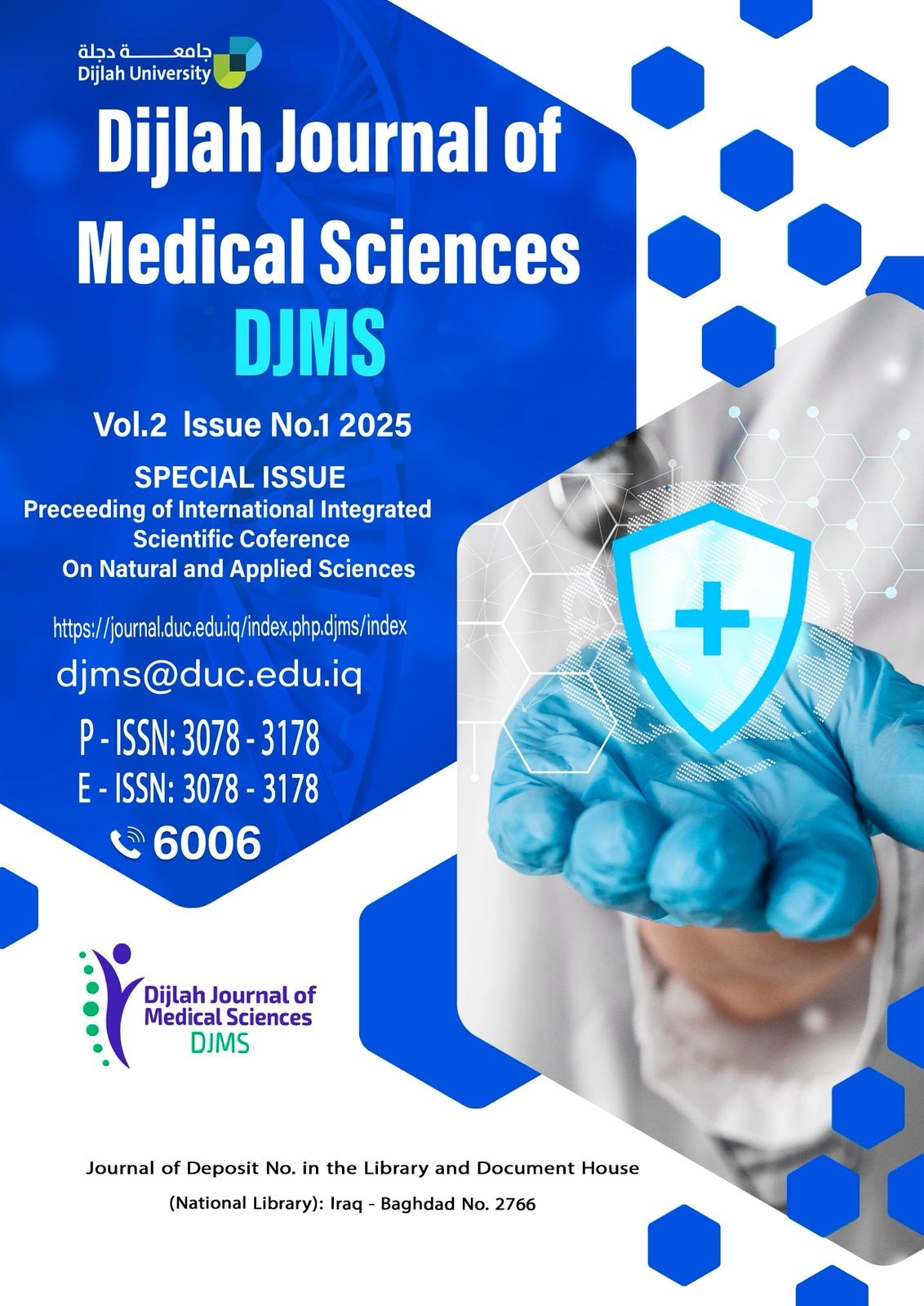pdf Determination of Quercetin Concentration Using Spectrophotometric Method Based on Diazotization Coupling Reaction
Fatma A. Khazaa, Farqid F. Mohammed and Farah Al-Hammashi
DOI:
https://doi.org/10.65204/DJMS-D-QCKeywords:
Quercetin, Sulphadiazin, Spectrophotometry, Diazotization coupling reactionAbstract
Quercetin is a natural organic compound and is the main component of plant pigments, which are responsible for the colours of many flowers, vegetables, and fruits. It has many therapeutic applications in human health. Spectroscopic methods (spectral analysis) were used to evaluate the pure form of quercetin. The interaction of quercetin (QUR) with sulfadiazine (SULF) led to the formation of an orange-colored complex, which was spectrophotometrically detected at a wavelength of 435 nanometres. The composition of the complex was determined using Job's method. The optimal method is influenced by several factors, including the volume of the reagent treated with diacetyl, the volume and type of the base medium, the order of addition, and the reaction time. The results showed that the linear range was from (10-100) µg/mL, with a determination coefficient (r² = 0.9982), and the limit of detection (LOD) was 0.1083 µg/mL, while the limit of quantification (LOQ) was 0.3943 µg/mL.

